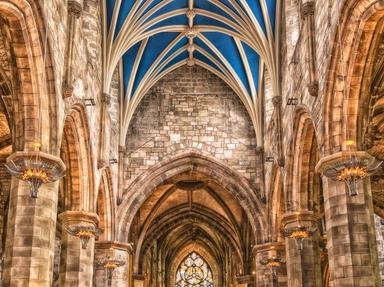Quiz Answer Key and Fun Facts
1. The Duomo of Turin, a fine specimen of Renaissance architecture, is the first destination on our trip. What famous religious relic can be viewed in this church?
2. This magnificent Romanesque Duomo with its lofty bell tower is found in the Lombardian city of Cremona. The city was also home to Antonio Stradivari and the Amati family, associated with the crafting of which musical instrument?
3. During the 16th century, this imposing medieval Duomo hosted many of the sessions of a council of the Catholic Church that marked the official beginning of the Counter-Reformation. What north-eastern Italian city am I referring to?
4. A UNESCO World Heritage Site, the stunning Duomo of Modena is considered one of the highest examples of Romanesque architecture in Italy and elsewhere. Its magnificent bell tower, a symbol of the city, is known by what name - meaning "little wreath"?
5. Towering over the historic city centre, the massive Duomo of Siena was built at the turn of the 14th century. In 1339, a project for a new, even larger cathedral was approved, but the enormous building was left unfinished because of what traumatic event?
6. Often believed to have inspired the construction of the Siena cathedral, this splendid Gothic Duomo dominates the Umbrian town of Orvieto. Besides its peerless architecture, the Duomo is famous for the frescoes of the San Brizio Chapel. What is the apocalyptic subject of these paintings?
7. Built in the 11th century, the Duomo of Anagni in south-eastern Lazio contains many artistic treasures within its austere medieval walls. Which controversial pope, Dante's arch-enemy, was born in Anagni, where he was also subjected to the humiliation that eventually led to his death in 1303?
8. This highly scenic Duomo, blending Western and Middle Eastern elements, is located in which southwestern Italian town, internationally renowned for its spectacular coastal landscape and juicy lemons?
9. Traveling eastward, we find the magnificent cathedral of Trani, built right on the shores of the Adriatic Sea in which south-eastern region - part of which forms the "heel" of Italy's boot?
10. We end our tour in Sicily, visiting the Cathedral of Monreale, on the outskirts of Palermo. This world-famous monument, known for its spectacular Byzantine-style mosaics, was built when Sicily was ruled by what people, also associated with English history?
Source: Author
LadyNym
This quiz was reviewed by FunTrivia editor
stedman before going online.
Any errors found in FunTrivia content are routinely corrected through our feedback system.
